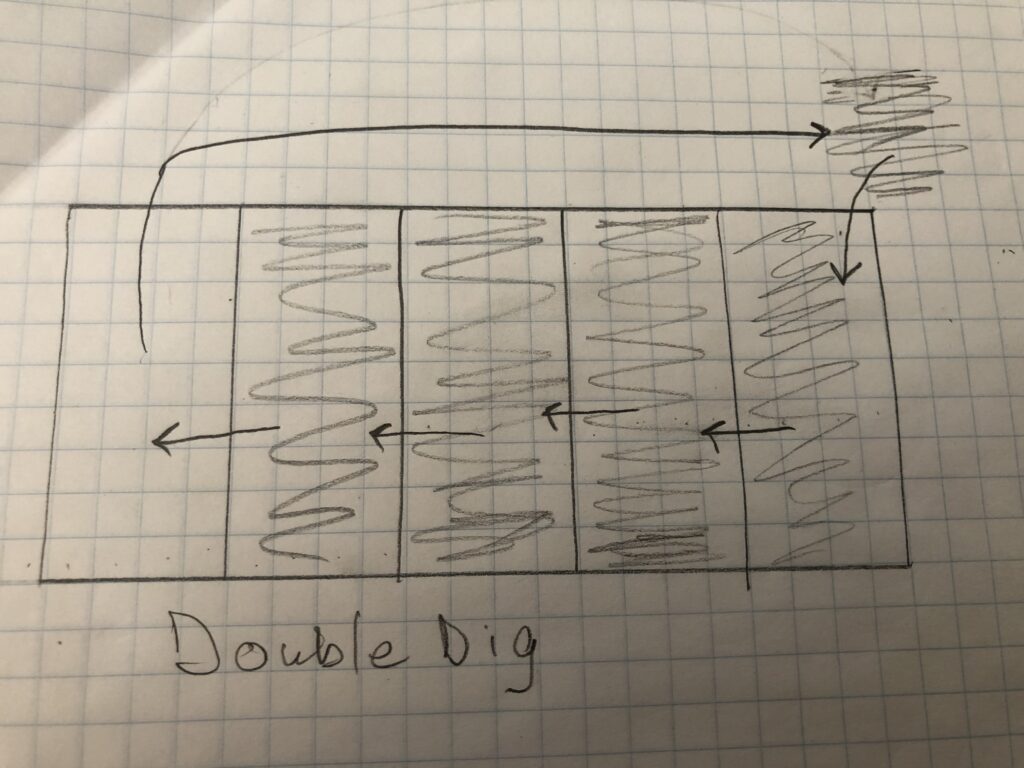If you want to expand a garden bed or add a new one, dig in now. The soil is usually easier to work in the fall and fall-prepared beds allow for earlier planting in spring. Work in organic soil amendments as you go. It’s best to hand dig a bed, rather than tilling, which can create hardpan soil beneath the surface. Avoid fall tilling when there’s a chance of soil erosion.

What to do – the hard way
The first garden bed I prepared I did what’s called double-digging. As a newbie, I followed the garden book’s instructions, convinced it was the only and best way to make a new garden bed.
- Dig a trench 10 to 12 inches deep and 12 inches side. Place the soil from the trench in a wheelbarrow or bucket.
- Dig a second trench right next to the first. Move the soil dug from the second trench into the first trench.
- Repeat until you reach the last trench. Take the soil from the first trench and dump it in the last trench.
- You can mix in compost, chopped leaves, or a balanced fertilizer in the soil as you move it from trench to trench. Or wait until the bed is dug and apply the amendments on top of the soil
What to do – the easy way
I learned a lot when double digging my first garden bed. I learned how to do it and I learned I didn’t want to do it again.
The easier way is to measure the length, width, and depth of the bed you want. Call a local landscape supplier and tell them you want a planter’s mix. Give them the dimensions and they will tell you how many cubic yards you will need. Planter’s mix is a blend of compost, soil and other organic matter.
No need to dig it in, just put the planter’s mix where you want it and presto, instant garden. Cover the newly prepared bed with chopped leaves, a light layer of shredded bark, compost, cover crop or other organic matter. You can bring in planter’s mix in spring, too.